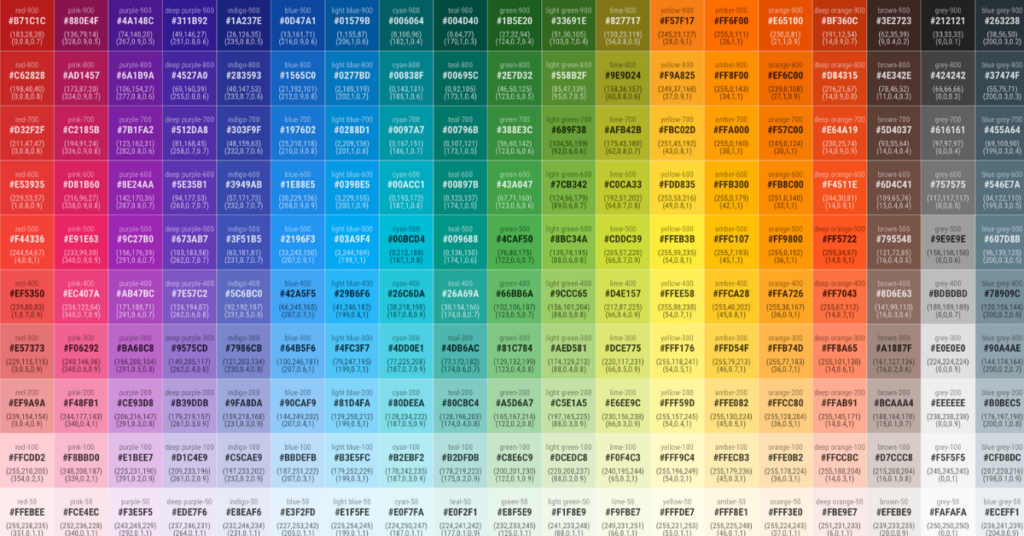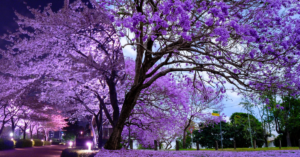Unique Color Names with Fascinating Origins
Color is not only what we see, it is what we experience, it is what we say and it is how we tell the stories without words. There are so many unique color names used nowadays (in a world of branding, design and fashion, not to mention baby naming) that it has actually become more than fashionable (it is a statement) to have first names with color names. This naming evokes emotion, mood and characterizes ordinary things. Whether you are decorating a room, introducing a new product, or even deciding the name of your baby, knowing the origins and the beauty of the special terminologies of colors leads to another world of creativity. We should look at what can be called the creation of names of unique colors and how they became more needed than ever.
A World Beyond Red and Blue: Why Unique Color Names Matter
When we consider color we are usually satisfied with the fundamentals red, blue, green. However, with the world that is always seeking exclusiveness, genericity will not be an option anymore. Unique color names come to rescue there. No matter what field you work in fashion, interior design, or branding the names such as Burnt Coral or Frosted Sage will sound much more than the pink or green will ever do. They are names that evoke imaginations about them and people are able to relate with them emotionally to a product or story.
What is more intriguing is the impact of these distinctive names of colors on the buyers. To take an example, lipstick named by crimson heat sounds more adventurous and seductive than plain red. This is the emotional tug that is instituted by the creative naming of colors and makes them easy to remember and sell. Yes, the names of unique colors do matter and their effect is considerably greater than what we think.
Ancient Roots of Today’s Unique Color Names
Even names of strange colors have their beginning story dating back hundreds of years ago. The ancient cultures dyed their garments and painted the utensils with the natural stuff that came to give names that we have after them today. The Egyptians ground gemstones such as lapis lazuli, to produce intensely blue pigments, and names such as Lapis Sky or Pharaoh Blue thus resulted. Romans instead delighted in the red-purple coloring made by the sea snails, to which monarchical titles were given (Imperial Violet).
Other cultures of the world added their colors: Indian saffron, Japanese indigo, and Native American ochre. Such historical associations add not only depth to the tale of a color but also cultural depth and history to the names of the colors. The same color catalogs we have today tend to denote those ancient influences so that the past is linked to the present through each stroke of a brush.
Unique Color Names That Come from Nature
The rest ageless and inimitable names of nature colors. Consider green in the freshest moss, blush in a sunset or icy glimmer of the snow. Rather than referring to a light green as a light green, brands or artists can incorporate labels such as mint whisper or the eucalyptus fog. These are poetic names, doing much more than describing color, they describe a sense.
Another major source of inspiration is presented by the flowers. Other shades, such as Lavender Mist, Dahlia Red or Peony Blush, have a direct inspiration in flowers. Stones and minerals are another adornment chest we can call a treasure, and that the names Moonstone Grey or Amber Gold not only draw upon the use of the color, but the texture and the mood of the name. They are not merely labels, they close the gap between being outside and being us in our wardrobe, house and designs with style and feeling.(Amazon)
How Artists and Designers Invent Unique Color Names
Have you ever thought what great minds give those beautiful, weird color names? The creatives in the art, fashion, or design often end up with the task of coming up with titles that are to the point. Pretty: these names are not only pretty, they are strategic. A fashion designer can call a coat of muffle-gray color “Fogbound” to feel mysterious and sophisticated whereas the graphic artist would utilize “Cyber Teal” to describe a tech-based organization in order to feel futuristic and modern.
These artists seek creativity through narratives, emotions, nature and even food (hi, butterscotch cream!). In this respect, the distinctive color names turn into some emotional device. They may choose something more expressive instead of naming a purple “Dark Violet,” something such as a “Velvet Night.” It is aimed at making them excited about the color, to feel that color.

10 Unique Color Names You’ve Probably Never Heard Of
Come on, let us play. Anybody ever heard of ten peculiar color names? Here are ten peculiar color names as strange as they are pretty:
- Zaffre– A pigment of deep blue made of cobalt.
- Falu Red– Swedish barn red.
- Glaucous-A grape that was bluish-gray.
- Smalt– Coloured cobalt glass powder, smalt, yields deep blue.
- Wenge – A brown hue that is dark and wood like.
- Razzmatazz– A meddling magenta-pink.
- Celadon -The ancient Chinese pottery green-gray.
- Isabelline – light grey-yellowish, used to refer to animal fur.
- Gamboge – A golden yellow of tree origin.
- Drake Neck-Optimated on the glitzy green feathers in a mallard.
These exotic names demonstrate how language and imagination turn a mere color into a unique unforgettable one.(Visit website for more)
The Psychology Behind Unique Color Names
The psychology of color is important in the way of responding to special color names. Emotions have a linguistic load. Rosewater Dream is a soft shade of pink that is romantic in feel, whereas Plastic Blush is the same shade of pink that is artificial or cold. It is the name of the game and how it prepares your brain.
Research even indicates that individuals tend to give a product a high score or even feel more comfortable using it when the product comes with an attractive name. This is relevant in marketing particularly when selling baby products, cosmetics and fashions. As an example, most parents want to find something unique in the name of their children ‘s colors-they want soft, easy to remember the name, which seems tranquil and intimate.
A name of a color can evoke a feeling of remembering the past, loyalty, anticipation or relaxation. That is why inventing names of colors is not only witty, but also strong.
Unique Color Names in Pop Culture and Branding
Whether it is the annual Color of the Year issued by Pantone or the colorful crayon names offered by Crayola, pop culture adores making a thing out of colors. Consider the examples of such names as Millennial Pink or Greige, which were not only the standard that defined the trend but became the cultural signs.
Marks are aware that one product can be instilled in different names of colors to make it unique. The makeup brands, specifically, tend to name the products in a manner that produces the emotional response in consumers, such as applying the name usually evokes in them, like the products titled with words such as Blood Moon or Bare Silk. Even a company like Apple resorts to creative color branding: like, “Midnight,” “Starlight,” “Space Gray” in order to create some imagination.
The use of the color as names is becoming popular in the naming baby culture such as names like; Indigo, Sienna or Coral. These names are poetic, refined, and have a character – as well as the colors they are named after.
Creating Your Own Unique Color Names: Tips & Tricks
It is best just as creative to name a color as it is to paint a color. In case, you choose to make up names of colors, here are some hints:
- Begin with emotion; begin with the subject of Uncle William; begin with something to express. Questions with the use of the color are: How does the color make you feel?
- Use nature. Consider flowers, weather or landscapes.
- Combine words. Such as Twilight Teal, or Sun-Kissed Clay.
- Add texture. The words such as velvet, smoke or gloss help.
- Make it basic yet unique. It becomes too complicated and it ceases to be charming
The process of making your own names to colors is fun particularly when one is marketing a product, making an art piece or even coming up with a name for a child. When you get bold, soft or poetic, you can be sure that a color name can become a story- you become the one to start it.
Conclusion:
Color names vary with quirky names and colors that have deep history, creativity, and even style. They are beyond being pretty, they are narrative. These are names which make us associate ourselves with products, spaces, art and even the names of our children in a very personal manner. The next time you are in a paint aisle, designing a logo or coming up with special names for babies remember this: names determine perception. Chosen with heart they can be used to arouse imagination, inspire trust and even make an impression in culture.
5 Key Takeaways:
- Emotional value and storytelling to design with unique color names.
- Most of them are based on history, nature and cultural customs.
- Brands and artists implement them as a way of reaching out to their audience at a much deeper level.
- Rather than make decisions on the basis of price, consumers can be persuaded through naming.
- Even parents are resorting to special color names of girls to seek special baby names
Considering that people are trying to differentiate in a world where everybody is trying to distinguish, the name of a color may as well be its strongest attribute.
FAQs:
Q1: What makes a color name “unique”?
It tends to be imaginative or poignant or nature based or historically based or mood based as in sea foam rather than light green.
Q2: Are unique color names used in baby naming?
Yes! Indigo or names such as Sienna are started by many parents who use these names of colors because they are pretty and also are distinctive.
Q3: How do brands come up with unique color names?
Designers frequently blend the emotional, the narrative and the elicitation of images, such as avoiding the ordinary, saying rectifically Midnight Rose and not just dark red.
Q4: What are examples of colors with unique names?
The examples are: Razzmatazz, gamboge, celadon. They are rare and culture-inspired.
Q5: Can I create my own unique color names?
Absolutely! Consider your reaction to a color in terms of sensation, and base it on nature, time of the year, or literary expression in order to memorize it.







Post Comment